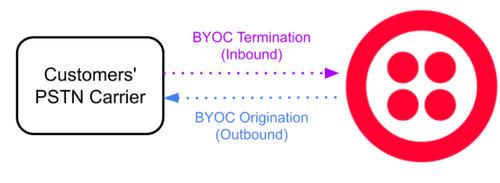About Twilio BYOC
Using the Twilio bring your own carrier (BYOC) feature is great and gives you a higher level of freedom in controlling your call quality on the carrier side of things. Using this feature you no longer need to be blind to what happens after you initiate a phone call via programmable voice, or Zoom Phone UI.
On the other hand, we have noticed that when scaling up your BYOC trunks things get very messy and lack advanced routing control like least cost routing (LCR), Weighted distribution, etc… Especially for developers who do not have a Session Border Controller (SBC), or short message service center (SMSC) sitting between the Cloud Communication provider and the end carrier(s).
Getting an SMSC / SBC just for this task is expensive and requires additional resources to manage, secure, and operate them. therefore the developer is probably going to end up getting stuck utilizing the Cloud Communication provider connectivity for convenience.
The Solution to BYOC Scaling Problems
To solve these problems, we are kicking off the Cloud BYOC project, a community-inspired SaaS project for your existing Twilio, Zoom Phone, and other cloud services by leveraging the BYOC feature that they offer.
The goal for this project is to let you have just one BYOC profile with your API provider and control routing policies to multiple carriers via the Cloud BYOC portal without the need to create another BYOC profile per trunk.
By default by using Cloud BYOC you don’t have to be dependent on one carrier, there are hundreds of alternatives that you can switch to without creating yet another BYOC profile in your Twilio, Zoom Phone portal.
With Cloud BYOC you don’t need an SBC or billing system to manage your costs across different providers. It providers you all that out of the box!
Getting Involved
For this project, we welcome both developers and carriers to join and contribute to solving the cloud communication BYOC debate once and for all.
For more details visit our temporarily landing page here https://lnkd.in/eppknHD3
